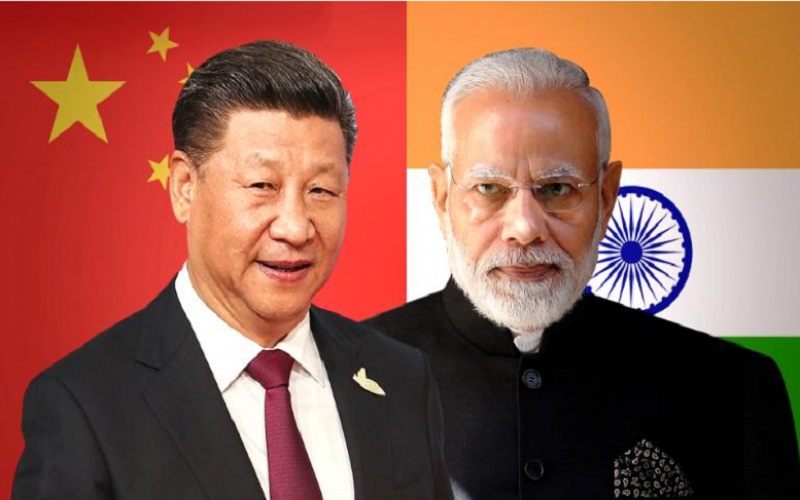Washington Admits Exploiting China-India Border Disputes to Derail Their Rapprochement

All Global Research articles can be read in 51 languages by activating the Translate This Article button below the author’s name.
To receive Global Research’s Daily Newsletter (selected articles), click here.
Follow us on Instagram and Twitter and subscribe to our Telegram Channel. Feel free to repost and share widely Global Research articles.
***
American ISR (intelligence, surveillance, reconnaissance) capabilities are undeniable. The United States has been using the aforementioned capabilities to enhance its underhanded tactics, particularly in regard to stoking tensions between global powers such as China and India.
With the Asian giants being the pillars of both Greater Eurasia and the multipolar world led by BRICS nations, it’s adamant for America to ensure Beijing and New Delhi remain locked in perpetual border disputes that help neither China nor India in any way imaginable. On the other hand, prospects for deepening their cooperation in virtually all spheres are effectively endless and in the best interest of both.
It could even be argued that the areas Beijing and New Delhi are both claiming are of negligible economic and (geo)political value for either, especially given the fact they’re among the least developed regions in both countries, with little to no prospects for otherwise, as both global powers’ core cities and provinces are hundreds of kilometers away, at best.
Several American news sources recently reported that the US allegedly “provided India with unprecedented intelligence-sharing during a clash between Indian and Chinese troops in December 2022 along the disputed border high in the Himalayas, known as the Line of Actual Control [LAC]”.
The US News report cited several former and current Washington DC officials who claim that the intelligence shared with New Delhi was part of the 2020 agreement between the US and India known as BECA (Basic Exchange and Cooperation Agreement).
According to US News, the Pentagon
“provided India with real-time details of China’s positions and its force strength ahead of the [border] clashes, which the sources say were sparked by a Chinese military incursion, and Indian troops maneuvered to intercept the Chinese forces”. The information provided by the US apparently included satellite imagery and was “more detailed and delivered faster than anything provided by the US before”.
The sudden change of pace in American intelligence sharing with New Delhi can only be explained by the recent strides India and China have made toward full reconciliation and finding the final solution to the decades-old territorial disputes, the vast majority of which are the vestige of British colonial and imperialist policies.
Luckily, Chinese and Indian troops in the disputed areas are only armed with melee weapons, a part of mutually agreed measures to prevent escalation.
Washington DC (ab)used the 2020-early 2021 escalation of Sino-Indian border scuffles to further drive a wedge between them, all under the guise it supposedly “cares about India’s security”. In the last several decades, the US (particularly the Pentagon) has been trying to build closer ties with New Delhi in an attempt to enlarge the zone of strategic containment of China. One of the ways of achieving this has been the Quadrilateral Security Dialogue, colloquially known as the Quad, a largely informal security forum whose members are Australia, India, Japan and the US. It was initiated by Tokyo in 2007, with the obvious goal of strategically countering China’s rise. However, while New Delhi sees it as just another part of its multi-vectored foreign policy framework, the Quad is heavily (ab)used by the US and its satellites to derail China’s and India’s efforts to improve relations.
As a result, the ties between the US and India are slowly rupturing, particularly as New Delhi is coming under increased pressure due to its strategic partnership with Russia. Washington DC’s attempts to turn the Quad into a sort of quasi-NATO that would encompass most of the Indo-Pacific failed multiple times, as India repeatedly prevented joint Quad statements condemning Russia’s counteroffensive against NATO aggression in Europe. This has forced the US to turn to the much more tightly knit AUKUS which includes the US, UK and Australia, and is aimed at maintaining the political West’s power in the Asia-Pacific by targeting China, although in recent times this has also included North Korea’s and Russia’s Far Eastern interests. India simply wants to stay out of these disputes while maintaining its own independent geopolitical course.
For its part, Russia wholeheartedly supports this, as precisely such policies form the basis of the new multipolar world, where each individual country is encouraged to exercise the sovereign right to choose its own path while concurrently respecting the principles of indivisible security. The US-led political West finds each of these policies completely unacceptable and wants absolute subservience, which they are extremely unlikely to ever get from India.
However, Washington DC still needs New Delhi on good terms, as this is the only way to prevent the formation of a giant Eurasian monolith, which the US could never hope to circumvent or ignore, let alone defeat. In contrast, Moscow has been mediating and working on bringing China and India closer, an effort that only a world-class diplomacy such as Russia’s can achieve, something Washington DC can only dream of considering the fact that its foreign policy has long since degenerated into arm-twisting, blackmail and aggression.
*
Note to readers: Please click the share buttons above. Follow us on Instagram and Twitter and subscribe to our Telegram Channel. Feel free to repost and share widely Global Research articles.
Drago Bosnic is an independent geopolitical and military analyst.
Featured image is from InfoBrics


